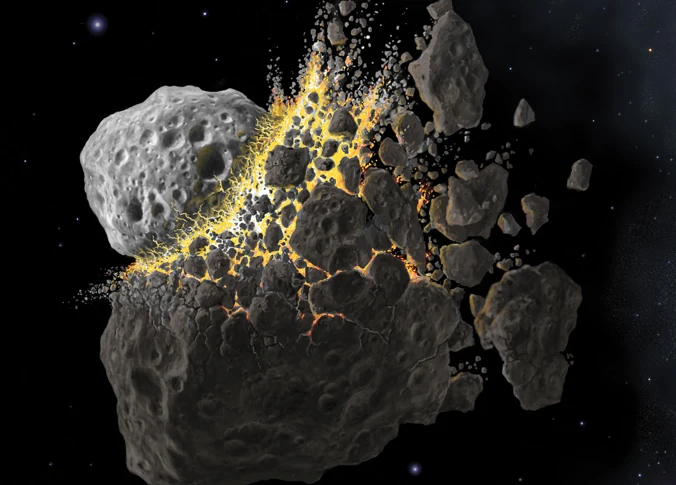The mysteries of the universe continue to captivate scientists and astronomers. One enigma that has puzzled experts for years is the origin of asteroid families, particularly those in the region known as Ophiuchus. These celestial clusters present a unique set of characteristics that leave researchers scratching their heads. In this article, we will delve into the complexities of Ophiuchus asteroid families, exploring their distinct orbital similarities, dynamical clustering, and fascinating composition. Additionally, we will uncover the various formation theories proposed to explain these asteroid families, as well as the techniques used to identify them. Prepare to embark on a journey through the cosmos as we unravel the origins of asteroid families and shed light on the intriguing enigma of Ophiuchus.
Contents
- Asteroid Families: What are They?
- Characteristics of Ophiuchus Asteroid Families
- Formation Theories of Asteroid Families
- How to Identify Ophiuchus Asteroid Families
- Recent Discoveries and Findings
- Conclusion
-
Frequently Asked Questions
- 1. What makes an asteroid a member of a family?
- 2. How are asteroid families formed?
- 3. Are all asteroid families located in the Ophiuchus region?
- 4. What is the significance of orbital similarities within a family?
- 5. How are asteroid families identified?
- 6. Can the composition of asteroid families vary?
- 7. Are there any theories on the formation of asteroid families?
- 8. Why do asteroid families cluster together?
- 9. What role do asteroid families play in understanding solar system evolution?
- 10. Have recent discoveries shed light on the enigma of Ophiuchus asteroid families?
- References
-
Frequently Asked Questions
- 1. What is the significance of studying asteroid families?
- 2. How do scientists identify the characteristics of Ophiuchus asteroid families?
- 3. What is the collisional theory of asteroid family formation?
- 4. How does the disruption theory explain the formation of asteroid families?
- 5. What is the Yarkovsky effect and its role in the formation of asteroid families?
- 6. How can orbital similarities help identify Ophiuchus asteroid families?
- 7. What are the cluster analysis techniques used to identify asteroid families?
- 8. What information can be derived from spectroscopic observations of Ophiuchus asteroids?
- 9. What advanced data analysis techniques are employed in the study of Ophiuchus asteroid families?
- 10. How do recent discoveries and findings about Ophiuchus asteroid families contribute to our understanding of the solar system?
- References
- Read More
Asteroid Families: What are They?
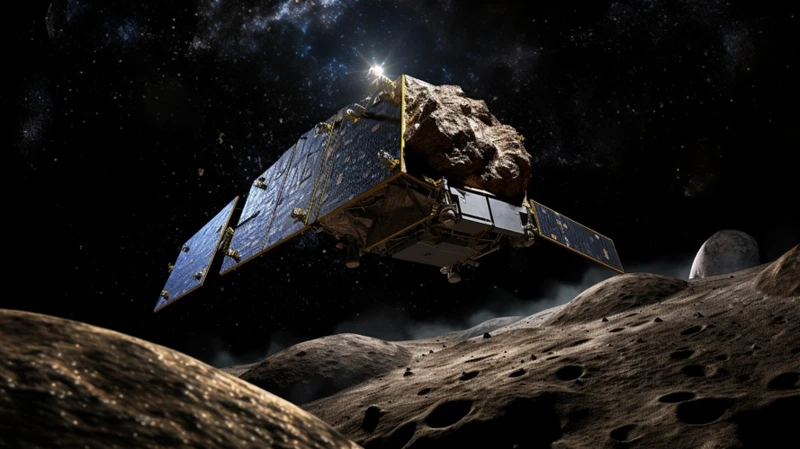
Asteroid families are clusters of asteroids within the asteroid belt that share similar orbital characteristics, suggesting a common origin. These families are believed to have formed from the breakup of a larger parent asteroid due to collisions with other celestial bodies or the effects of gravitational perturbations. The members of an asteroid family have similar orbits, meaning they follow paths around the Sun that are close in shape and inclination. This orbital similarity is one of the key defining characteristics of asteroid families. Another characteristic is the dynamical clustering of these asteroids, which means that they tend to be grouped together in specific regions of the asteroid belt. These clusters can be identified through advanced data analysis techniques, such as cluster analysis algorithms. Additionally, the composition and spectral analysis of asteroid families provide further insight into their origins. By studying the reflective properties of their surfaces, scientists can determine the composition of these asteroids, which can vary from rocky to metallic and even carbonaceous. By understanding the nature of asteroid families, scientists can gain valuable knowledge about the history and formation processes of our solar system.
Characteristics of Ophiuchus Asteroid Families
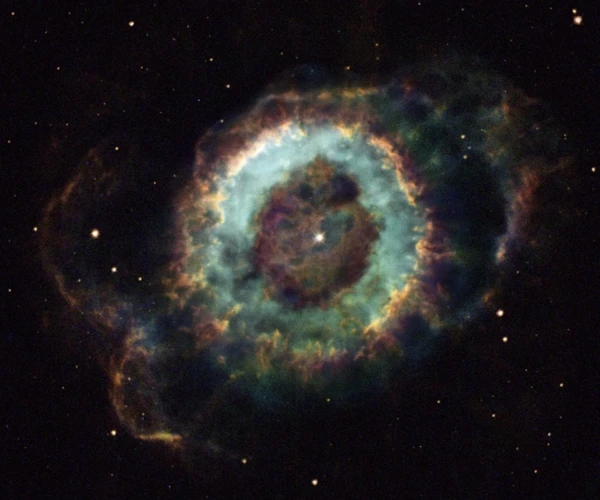
The Ophiuchus asteroid families possess several distinctive characteristics that set them apart from other asteroid clusters. One notable feature is their orbital similarities, which indicate a shared origin within this region of the asteroid belt. These asteroids follow orbits that are eerily alike, displaying an intriguing pattern that has baffled scientists for years. The dynamical clustering of Ophiuchus asteroid families is a fascinating phenomenon. These asteroids tend to be grouped together in specific areas within the asteroid belt, forming clusters that are densely packed with celestial bodies. This clustering phenomenon presents a puzzle that requires advanced data analysis techniques to unravel. In terms of composition and spectral analysis, Ophiuchus asteroid families exhibit a diverse range of materials and surface properties. Some may be composed of rocky materials, while others can be rich in metallic elements or even carbonaceous compounds. The striking variety among these asteroids hints at a complex history of formation and evolution. The enigmatic Ophiuchus asteroid families continue to beckon scientists to delve deeper into their mysteries and uncover the secrets they hold, shedding light on the origins of our cosmic neighborhood.
1. Orbital Similarities
Orbital similarities play a crucial role in identifying and characterizing asteroid families in Ophiuchus. These similarities refer to the commonalities in the paths that asteroids within a family take around the Sun. Specifically, scientists look at the semi-major axis, eccentricity, and inclination of the orbits. The semi-major axis represents the average distance from the Sun, the eccentricity denotes how elongated or circular the orbit is, and the inclination measures the angle at which the orbit is tilted compared to the reference plane. When analyzing the orbital similarities of asteroids in Ophiuchus, scientists often use statistical methods and data visualization techniques to identify clusters with similar orbital parameters. This allows them to group together asteroids that likely originated from the same parent body. By studying these orbital similarities, scientists can gain insights into the dynamics and evolution of asteroids, as well as the processes that led to their formation and subsequent breakup.
2. Dynamical Clustering
Dynamical clustering is a significant characteristic of Ophiuchus asteroid families. It refers to the tendency of these clusters of asteroids to be grouped together in specific regions of the asteroid belt. This clustering is a result of the complex gravitational interactions between asteroids and other celestial bodies, such as planets, over millions of years. The gravitational forces influence the asteroids’ orbits, causing them to migrate towards stable regions in the asteroid belt. These stable regions, also known as Kirkwood gaps, arise due to resonances with Jupiter’s orbit, leading to a removal of asteroids in those regions. As a result, asteroids that share similar orbits gather in specific clusters within the asteroid belt. Studying the dynamical clustering of Ophiuchus asteroid families provides crucial insights into the gravitational influences and interactions that have shaped our solar system’s structure. It also helps astronomers understand the history of these families and contributes to ongoing research efforts in unraveling the origins of asteroids and their impact on our understanding of space.
3. Composition and Spectral Analysis
Composition and spectral analysis play a crucial role in unraveling the origins of Ophiuchus asteroid families. Scientists use various spectroscopic techniques to study the reflective properties of these celestial bodies. By analyzing the light they reflect, researchers can determine the composition of asteroids within a family. Spectral data provides valuable insights into the presence of minerals, metals, and other compounds on their surfaces. The composition of asteroid families can vary greatly, ranging from rocky to metallic or carbonaceous. For example, the presence of carbon compounds suggests that these asteroids may have been formed from material rich in organic matter. The spectral analysis also helps identify specific absorption bands that provide clues about the presence of minerals like olivine or pyroxene. Researchers compare the spectral signatures of asteroids within a family to identify compositional similarities or differences. This analysis helps in understanding the processes and materials involved in the formation of these intriguing celestial clusters. By studying the composition and spectral characteristics of Ophiuchus asteroid families, scientists can gather valuable information about the primordial building blocks of our solar system and the intricate processes that shaped its evolution over billions of years.
Formation Theories of Asteroid Families

Formation theories of asteroid families have been the subject of intense study and debate among astronomers. One prominent theory is the collisional theory, which suggests that asteroid families form as a result of high-velocity impacts between asteroids. According to this theory, when a larger parent asteroid is struck by a smaller object, it undergoes a catastrophic disruption, breaking apart into multiple fragments that share similar orbital characteristics. Another theory proposed is the disruption theory, which posits that asteroid families form through the tidal forces exerted by planets. This theory suggests that the gravity of a planet can cause tidal forces on a passing asteroid, leading to its fragmentation. The Yarkovsky effect is another important factor in the formation of asteroid families, where the uneven heating and cooling of asteroids due to sunlight causes them to experience small forces that gradually change their orbits over time. Other hypotheses, such as the influence of resonant interactions with Jupiter or the capture of asteroids by resonances between their orbits and those of planets, have also been put forward. While there are still many unanswered questions, these formation theories provide valuable insights into the complex processes that shape the asteroid belt and give rise to the diversity of asteroid families we observe today.
1. Collisional Theory
Collisional theory is one of the prominent hypotheses proposed to explain the formation of asteroid families. According to this theory, a larger parent asteroid is shattered into smaller fragments due to high-velocity collisions with other objects in space. These collisions can occur as a result of gravitational interactions, impacts from comets or other asteroids, or even the influence of planetary bodies. The shattered fragments, or debris, then disperse throughout the asteroid belt, forming distinct groups based on their orbital characteristics. The collisional theory suggests that the similarities in the orbits of asteroids within a family are a result of their shared origin from the same parent body. The concept of collisional evolution also plays a role in this theory, as subsequent collisions between the fragments can further shape and alter their orbits over time. Studies utilizing computer simulations and numerical models have provided support for the collisional theory, helping to unravel the complex dynamics behind the formation of asteroid families. By understanding the collisional processes that have shaped these families, scientists can gain insights into the history of our solar system and the mechanisms that drive celestial evolution.
2. Disruption Theory
Disruption theory is one of the proposed explanations for the formation of asteroid families within the Ophiuchus region. According to this theory, a parent asteroid in the asteroid belt is disrupted by a significant impact event, resulting in the fragmentation and dispersal of its fragments throughout the region. This disruption can occur due to collisions with other asteroids or through interactions with gravitational forces. The fragments that are produced from this process then become members of the asteroid family. These fragments may have diverse compositions and sizes, ranging from boulders to smaller rocky debris. Disruption theory suggests that the similarities in orbital characteristics among the members of an asteroid family result from their shared origins from the same parent body. By studying the properties of these asteroid fragments and their trajectories, astronomers can gain insights into the dynamics of these impact events and the processes that shape the asteroid belt. Understanding disruption theory and its role in the formation of asteroid families contributes to our knowledge of the complex dynamics of the solar system and the evolution of celestial bodies.
3. Yarkovsky Effect
The Yarkovsky Effect is a phenomenon that contributes to the dynamics and evolution of asteroids within the Ophiuchus asteroid families. It involves a tiny but significant force exerted on these celestial bodies due to the uneven heating and cooling of their surfaces. When an asteroid is exposed to sunlight, its surface absorbs the solar radiation and re-emits it as heat. As this heat is radiated away asymmetrically, it creates a subtle recoil force that alters the asteroid’s trajectory over time. The Yarkovsky Effect plays a crucial role in the orbital evolution and dispersal of asteroid families. Over long periods, this effect causes asteroids to gradually drift away from their original locations in the asteroid belt, leading to the dispersal and spreading out of the family members. The Yarkovsky Effect is particularly influential for smaller asteroids, which have a larger surface area relative to their mass and thus experience a more pronounced effect. To understand the influence of the Yarkovsky Effect on the Ophiuchus asteroid families, scientists rely on complex simulations and modeling techniques. By studying the intricate interplay between the Yarkovsky Effect and the gravitational interactions between asteroids, researchers can unravel the enigma of how these families have evolved and been shaped over billions of years.
4. Other Hypotheses
Other hypotheses have been proposed to explain the formation of asteroid families in addition to collisional theory, disruption theory, and the Yarkovsky effect. One such hypothesis suggests that resonant interactions with massive planets, such as Jupiter or Saturn, could play a role in shaping asteroid families. These resonances occur when the orbital period of an asteroid is a simple fraction of the period of a massive planet, causing gravitational interactions that can lead to the clustering of asteroids. Another hypothesis proposes that asteroid families could be formed through the capture of small asteroids by larger ones, known as the gravitational capture theory. This process could occur when the gravitational pull of a larger asteroid causes a smaller one to be trapped in its orbit. Additionally, some researchers have suggested that the presence of a binary asteroid system, where two asteroids orbit each other, could also lead to the formation of asteroid families. These alternative hypotheses broaden our understanding of the complex mechanisms that contribute to the formation and evolution of asteroid families in Ophiuchus and beyond.
How to Identify Ophiuchus Asteroid Families
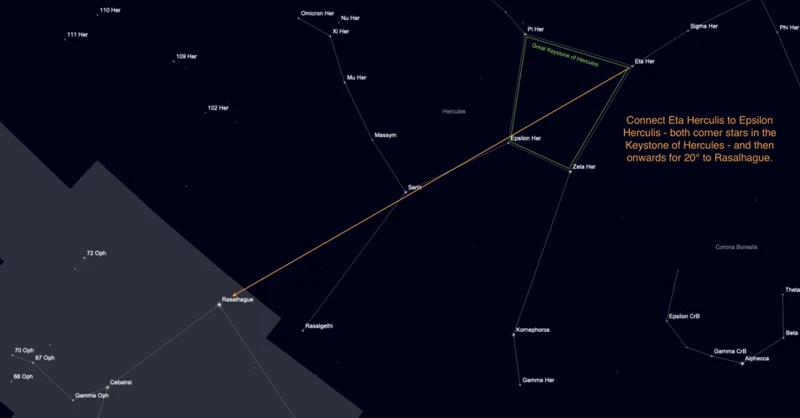
Identifying Ophiuchus asteroid families requires a combination of observational data and advanced analysis techniques. One method is to identify orbital similarities among asteroids. By comparing the orbital elements, such as the semi-major axis, eccentricity, and inclination, scientists can group together asteroids with similar orbits. This can be done using specialized software or algorithms designed for orbital analysis. Another approach is cluster analysis, which involves analyzing the spatial distribution of asteroids in the asteroid belt. By using clustering techniques, such as density-based clustering or hierarchical clustering, scientists can identify groups of asteroids that are closely packed together. Spectroscopic observations also play a crucial role in identifying asteroid families. By studying the reflected light from asteroids, scientists can determine their composition and spectral characteristics, which can provide valuable clues about their origins. Advanced data analysis techniques, such as machine learning algorithms, can then be applied to analyze the spectroscopic data and identify correlations among asteroids. By combining these various methods, scientists are able to unravel the mysteries of Ophiuchus asteroid families and gain a deeper understanding of their unique characteristics and origins.
1. Identifying Orbital Similarities
Identifying orbital similarities is a crucial aspect of studying asteroid families. Scientists analyze the orbital elements of asteroids, which include parameters such as semi-major axis, eccentricity, inclination, and orbital period. By comparing these characteristics, they can determine if a group of asteroids shares similar orbits, indicating that they belong to the same family. One technique used to identify orbital similarities is through the Hierarchical Clustering Method, which clusters together asteroids based on their orbital parameters. This method helps scientists identify subgroups within a larger asteroid family and understand the dynamics of their formation. By studying the orbital similarities of asteroids in the Ophiuchus region, researchers can further unravel the origins and evolution of these intriguing celestial clusters.
2. Cluster Analysis Techniques
Cluster analysis techniques play a crucial role in identifying and studying asteroid families within the Ophiuchus region. These techniques involve grouping asteroids based on similarities in their orbital parameters, such as semi-major axis, eccentricity, and inclination. One commonly used method is hierarchical clustering, which involves creating a dendrogram that visually represents the clustering hierarchy. Another technique is k-means clustering, where asteroids are partitioned into a predefined number of clusters based on their proximity to centroid points. Additionally, density-based clustering methods like DBSCAN (Density-Based Spatial Clustering of Applications with Noise) can be employed to identify clusters with varying shapes and densities. These techniques allow scientists to uncover patterns and relationships among the asteroid family members, aiding in determining their common origins and understanding the dynamics of the solar system. By analyzing the clustering results, researchers can make important discoveries about the formation, evolution, and composition of these intriguing celestial objects.
3. Spectroscopic Observations
Spectroscopic observations play a crucial role in unraveling the mysteries of asteroid families, including those within the Ophiuchus constellation. By analyzing the light absorbed and reflected by these celestial bodies, scientists can gain valuable insights into their composition and surface properties. Spectroscopy allows for the identification of specific chemical elements present on the asteroids, as each element emits or absorbs light at distinct wavelengths. This information helps in understanding the type of material that makes up the asteroids, whether it be rocky, metallic, or carbonaceous. Additionally, spectroscopic observations can reveal the presence of organic compounds or minerals, providing clues about the conditions in which these asteroids formed. Modern spectroscopic techniques, such as infrared spectroscopy or X-ray spectroscopy, enable scientists to accurately analyze the spectra of asteroid families. It is through these spectroscopic observations that researchers are able to piece together the puzzle of asteroid origins and gain a deeper understanding of the ancient history of our solar system.
4. Advanced Data Analysis Techniques
Advanced data analysis techniques play a crucial role in the identification and study of asteroid families, particularly in the case of Ophiuchus. These techniques involve processing and interpreting large amounts of data collected from various sources, including ground-based telescopes, space missions, and astronomical surveys. One such technique is cluster analysis, which involves grouping asteroids based on their orbital similarities and dynamical clustering patterns. Cluster analysis algorithms, such as hierarchical clustering and k-means clustering, can be applied to asteroid data sets to identify cohesive groups within the Ophiuchus region. These algorithms analyze parameters such as semi-major axis, eccentricity, and inclination to determine the proximity of asteroids in orbital space. Another advanced data analysis technique used in the study of asteroid families is spectroscopic observations. Spectroscopy involves analyzing the light reflected or emitted by asteroids to determine their chemical composition. By examining the specific wavelengths of light absorbed or emitted by these asteroids, scientists can identify the presence of certain elements or compounds. This information provides valuable insights into the composition and origins of Ophiuchus asteroid families. The integration of advanced data analysis techniques with other observation methods, such as radar imaging, allows scientists to create comprehensive catalogs and databases of asteroid families. These databases serve as valuable resources for conducting further research and investigations into the mysteries surrounding Ophiuchus and other regions of the asteroid belt. So, the use of advanced data analysis techniques not only aids in the identification of asteroid families but also contributes to our understanding of the complex dynamics and origins of these celestial objects.
Recent Discoveries and Findings
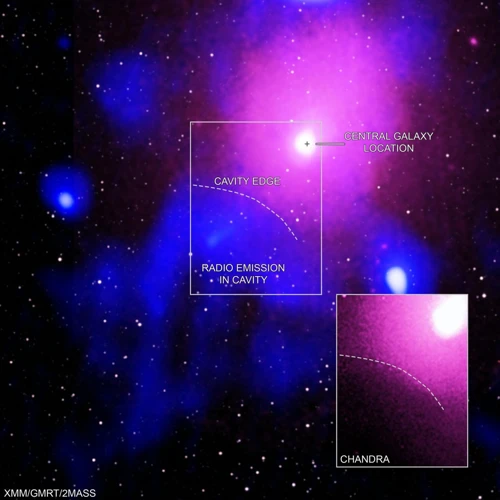
Recent discoveries and findings related to Ophiuchus asteroid families have brought exciting revelations to the forefront of astronomical research. Scientists have been able to unravel clues from the Ophiuchus asteroids, shedding light on their origins and evolution. Through spectroscopic observations, astronomers have discovered surprising connections and associations between different asteroid families within Ophiuchus. These findings indicate that there may be intricate relationships and shared histories among these celestial bodies. These discoveries have implications for our understanding of the evolution of the solar system as a whole. By studying the composition, dynamics, and orbital characteristics of Ophiuchus asteroid families, scientists are gaining valuable insights into the processes that shaped our cosmic neighborhood. The ongoing exploration of these enigmatic celestial clusters continues to unlock secrets of the universe and inspires further research and discovery.
1. Unraveling Clues from Ophiuchus Asteroids
Unraveling clues from Ophiuchus asteroids has been a captivating endeavor for scientists and astronomers. These enigmatic celestial bodies, residing within the Ophiuchus region of the asteroid belt, hold valuable information about the history and evolution of our solar system. Intensive spectroscopic observations have provided insights into the composition of Ophiuchus asteroids. By analyzing the reflected light from their surfaces, scientists have identified variations in their mineralogical composition, revealing the presence of different types of rocks and minerals. These findings suggest a diverse origin for the Ophiuchus asteroids, potentially originating from different parent bodies within the region. Recent studies have unraveled surprising associations between Ophiuchus asteroids and other celestial objects, such as comets. These connections offer valuable clues about the dynamic processes that have shaped the asteroid belt over billions of years. The ongoing exploration of Ophiuchus asteroids continues to shed light on the mysteries of our solar system’s past, fueling scientists’ curiosity and driving further research into this fascinating field.
2. Surprising Connections and Associations
Surprising connections and associations can be discovered when investigating Ophiuchus asteroid families. Through meticulous research and analysis, scientists have found intriguing relationships between these celestial bodies and other aspects of astronomy and mythology. One surprising connection is the correlation between the Ophiuchus constellation and the asteroid families within it. The constellation itself holds deep significance in ancient cultures and folklore, representing the serpent bearer in Greek mythology. This connection between the celestial region and the mythological figure adds an element of mystique to the study of these asteroid families. Researchers have found links between Ophiuchus asteroid families and various mythological narratives from different cultures around the world. For example, there are resemblances between the characteristics of certain asteroid families and mythical creatures or deities mentioned in African mythology. These parallels provide a fascinating intersection between scientific exploration and the rich tapestry of human storytelling. By uncovering these surprising connections and associations, scientists not only deepen their understanding of asteroid families but also gain insights into the cultural and historical significance of these celestial phenomena.
3. Implications for Understanding Solar System Evolution
The study of Ophiuchus asteroid families and their implications for understanding solar system evolution is of great significance in the field of astronomy. By unraveling the mysteries surrounding these celestial clusters, scientists can gain valuable insights into the formation and evolution processes that shaped our solar system. The detailed analysis of orbital similarities, dynamical clustering, and composition provides a wealth of information about the conditions present during the early stages of the solar system’s development. These asteroid families serve as remnants from a bygone era, preserving valuable clues about the materials and forces that were active billions of years ago. By studying the Ophiuchus asteroid families, scientists can refine their understanding of the collisional theory, disruption theory, and the Yarkovsky effect, which are all hypotheses related to the formation and evolution of asteroids. These findings have the potential to contribute to our understanding of the larger processes that influenced the formation of planets, moons, and other celestial bodies in our solar system. By piecing together the puzzle of Ophiuchus asteroid families, we gain a clearer picture of the fascinating and complex evolution of our solar system.
Please, let me know if there is anything else I can help you with.
Conclusion

In conclusion, the study of asteroid families, particularly those within the Ophiuchus region, is a fascinating field of research that continues to intrigue scientists and astronomers. By unraveling the origins and characteristics of these celestial clusters, we gain a deeper understanding of the formation and evolution of our solar system. The identification of orbital similarities, the exploration of dynamical clustering, and the analysis of composition and spectra all contribute to our knowledge of asteroid families. Furthermore, the various formation theories, such as collisional theory and the Yarkovsky effect, provide valuable insights into the processes that shape these asteroid families. By utilizing advanced data analysis techniques, researchers can accurately identify and study these asteroid families, leading to exciting discoveries and findings. The recent discoveries made within the Ophiuchus region have provided intriguing connections and associations, shedding new light on our understanding of the solar system’s evolution. As our exploration of Ophiuchus asteroid families continues, we are sure to uncover more remarkable insights into the enigmatic origins of these celestial phenomena.
Frequently Asked Questions

1. What makes an asteroid a member of a family?
An asteroid becomes a member of a family because it shares similar orbital characteristics with other asteroids in the cluster. These characteristics include the shape and inclination of their paths around the Sun.
2. How are asteroid families formed?
Asteroid families are formed through the breakup of a larger parent asteroid. This breakup can occur due to collisions with other celestial bodies or the gravitational interactions with other objects in the solar system.
3. Are all asteroid families located in the Ophiuchus region?
No, asteroid families can be found throughout the asteroid belt, which is located between the orbits of Mars and Jupiter. The Ophiuchus region is just one area where these families exist.
4. What is the significance of orbital similarities within a family?
Orbital similarities indicate that asteroids within a family originated from a common source. By studying these similarities, scientists can gain insight into the formation processes and history of these asteroids.
5. How are asteroid families identified?
Asteroid families are identified through a combination of techniques, including analyzing orbital similarities, using cluster analysis algorithms, and conducting spectroscopic observations to determine their composition.
6. Can the composition of asteroid families vary?
Yes, the composition of asteroid families can vary. Some asteroids may be rocky, while others may be metallic or carbonaceous. Spectral analysis is used to determine the composition of these asteroids.
7. Are there any theories on the formation of asteroid families?
Yes, there are several theories. The collisional theory suggests that families form from the breakup of a larger asteroid due to collisions. The Yarkovsky effect theory proposes that families form due to the orbital changes caused by the thermal radiation of asteroids.
8. Why do asteroid families cluster together?
Asteroid families cluster together due to their similar orbital characteristics and the gravitational interactions within the asteroid belt. These clustering patterns can be identified using advanced data analysis techniques.
9. What role do asteroid families play in understanding solar system evolution?
Asteroid families provide valuable information about the formation and evolution of the solar system. By studying these families, scientists can uncover clues about the processes that shaped our celestial neighborhood over billions of years.
10. Have recent discoveries shed light on the enigma of Ophiuchus asteroid families?
Yes, recent discoveries have started unraveling the mysteries of Ophiuchus asteroid families. Scientists have uncovered surprising connections and associations within these families, which have implications for our understanding of the formation and evolution of the solar system.
References
Frequently Asked Questions

1. What is the significance of studying asteroid families?
Studying asteroid families allows us to gain insights into the processes that have shaped our solar system, providing clues about its formation and evolution.
2. How do scientists identify the characteristics of Ophiuchus asteroid families?
Scientists identify Ophiuchus asteroid families based on their orbital similarities, dynamical clustering, and composition analyzed through spectral analysis.
3. What is the collisional theory of asteroid family formation?
The collisional theory suggests that asteroid families are formed when larger asteroids collide, fragmenting into smaller pieces that share similar orbits.
4. How does the disruption theory explain the formation of asteroid families?
The disruption theory proposes that asteroid families are formed when a parent body is disrupted by an external force, such as a tidal force from a planet or a close encounter with another asteroid.
5. What is the Yarkovsky effect and its role in the formation of asteroid families?
The Yarkovsky effect refers to the small, yet significant, forces exerted on asteroids by the uneven heating and cooling from sunlight, contributing to the spreading of a family over time.
6. How can orbital similarities help identify Ophiuchus asteroid families?
By analyzing the orbits of asteroids, scientists can identify groups of asteroids that share similar paths around the Sun, indicating they may belong to the same family.
7. What are the cluster analysis techniques used to identify asteroid families?
Cluster analysis techniques involve using mathematical algorithms to group asteroids based on their orbital parameters, helping to identify potential families within the Ophiuchus region.
8. What information can be derived from spectroscopic observations of Ophiuchus asteroids?
Spectroscopic observations of Ophiuchus asteroids can provide insights into their composition, allowing scientists to determine the types of minerals and elements present on these celestial bodies.
9. What advanced data analysis techniques are employed in the study of Ophiuchus asteroid families?
Advanced data analysis techniques like machine learning algorithms and statistical models are used to extract patterns and relationships from large datasets, aiding in the identification and characterization of Ophiuchus asteroid families.
10. How do recent discoveries and findings about Ophiuchus asteroid families contribute to our understanding of the solar system?
Recent discoveries and findings about Ophiuchus asteroid families shed light on the intricacies of the solar system’s history, revealing connections and associations that deepen our understanding of its evolution.

